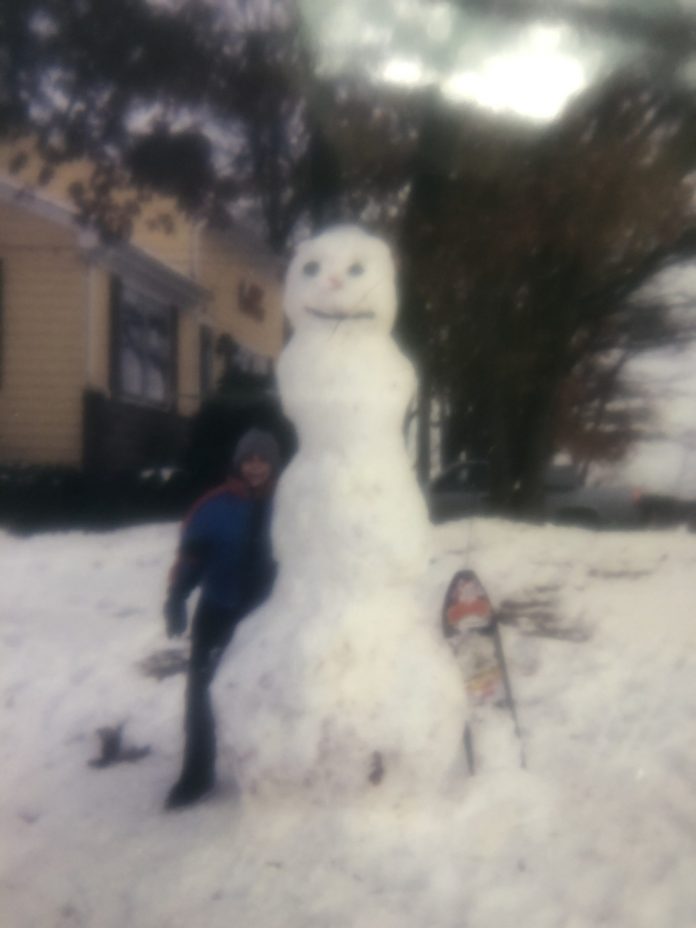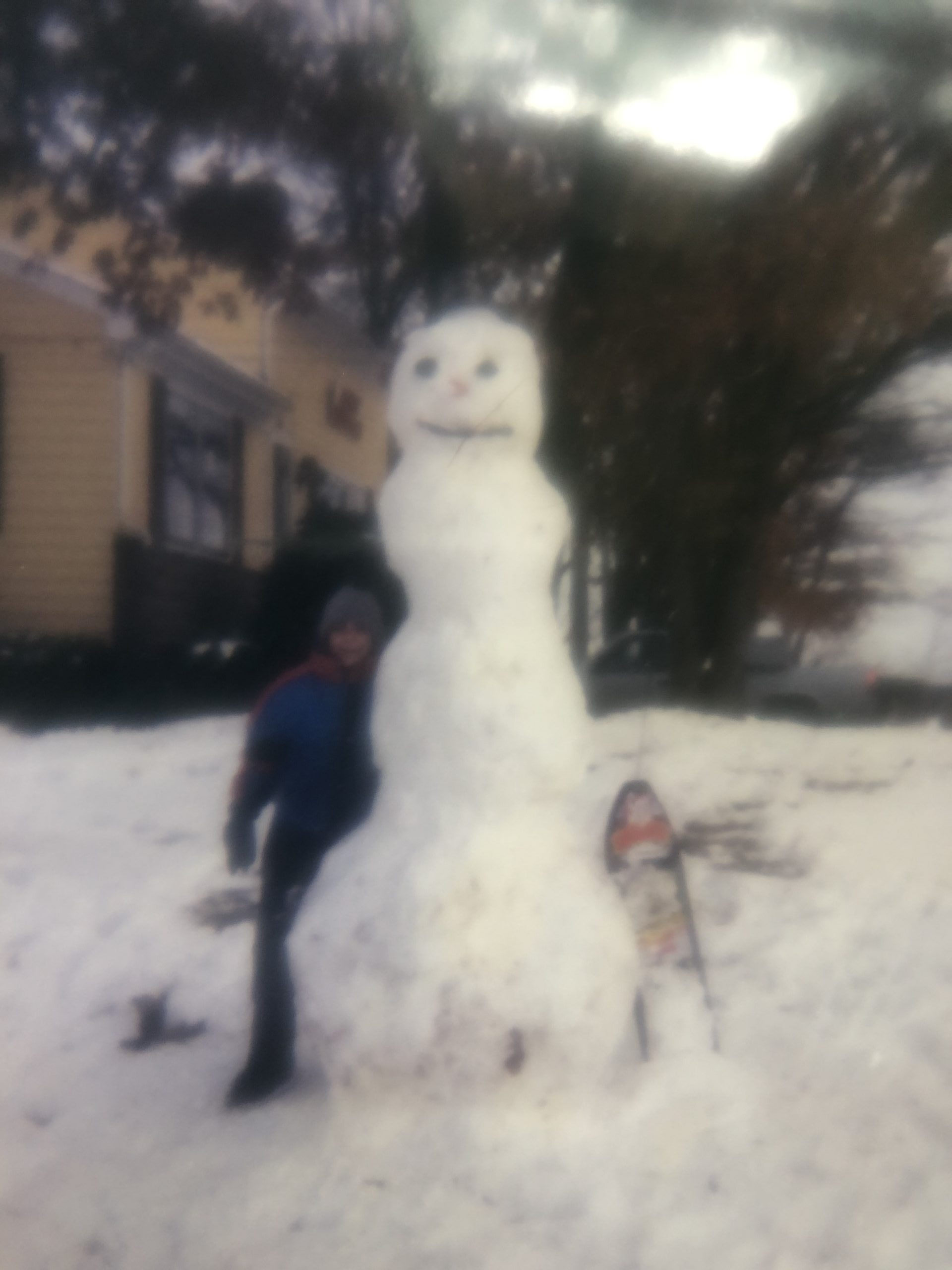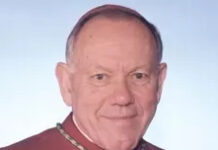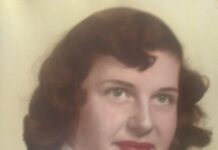
It is not always easy working as a reporter in the town where I live.
In 2017, I bought a house just a mile away from the home where I was raised in North Smithfield.
Being back home does have its advantages: I know people in town. I have a large family and many friends who still live in North Smithfield and as a journalist, I get to hear the “word on the street,” and balance that with specific details from various records and officials.
But conflicts inevitably develop, including, recently, a dispute between neighbors over erecting a stop sign at the corner of Sunnycrest and Carlton Avenues.
I was raised in a house my father built at 5 Sunnycrest Avenue – right on the corner of Carlton. In the 1950s, my father purchased the land to build a home for his family for $400.
Our house was to be the first on the street. A mill worker who himself was the second youngest of eight children, my father cleared the lot and dug out the basement with a shovel, a task that took him more than ten years.
Once he was done, he went on to build another half dozen or more homes in the same neighborhood. Over the years, he was hired for various renovation jobs on at least a dozen more. His career as a builder was long established before I came along – some 12 years after my next youngest sibling.
As the youngest of five, my childhood on Sunnycrest Avenue was idyllic. The neighborhood back then was still something from a different era. A group collaborated to hold week-long events with schedules of visits to different houses, ending with block parties in the road. Even as a kid, I knew the names of the neighbors who lived in every house – and had been inside of most of them. Dogs roamed unleashed, and we fearlessly rode sleds down the suicide hill that was Carlton Avenue every winter, and roamed the sand banks and frog ponds further down the quiet street each summer.
The first time my name appeared in the news was at the age of five, when a photographer from The Woonsocket Call caught me lying lazily in a yard – just feet away from the very intersection at question – next to a neighbor’s Dalmatian. My little head was nearly inside the dog’s yawning mouth on the front page of the paper the next day under the headline “Dog Days of Summer.”
My father left his keys in his car every night in that neighborhood, and he never locked a door. The only fear I ever remember experiencing in those years was in the winter of 1987, when a mysterious sniper was terrorizing northern Rhode Island homes, and hit one of our neighbors while he sat in his living room. Anxiety was high as neighbors debated if it was safe to leave their curtains open to display Christmas trees, with emotions even further heightened because the house hit was the same place where neighbors always came together for a holiday party.
And like many small town families, we held large Sunday dinners almost every week, with cars lining the street by 5 Sunnycrest Avenue.
As my family has grown to include not just nephews and nieces, but their children, and even their children’s children, we have all stayed close. Sunday is a tradition we keep to this day, even distancing from one another in the backyard through recent weeks after months of separation due to the pandemic.
When my parents were ready to downsize, needless to say my siblings and I felt it was important to keep the house my father built in the family, and in 2011, my sister Terry Harvey sold her home in Glocester and purchased the property.
She and her husband Andy have raised two sets of adopted siblings there in the decade since – creating one conflict of interest for me as a journalist: I had to write about Adoption Rhode Island’s recognition of their dedication while I was working for The Valley Breeze.
Times change, of course, and so do neighborhoods. When I was a teenager, it was unimaginable that neighbors would risk each other’s lives – or defend anyone else who did. I don’t believe it is just the naïvety of youth that makes me understand that people took care of each other.
Fast forward to Christmas Day in 2017: a drunk driver crashes into the cars parked in front for my family’s holiday celebration on the way to another house in the neighborhood.
Unlike the days where dogs and kids could be caught lounging in the street, my nephews were not allowed to freely ride their bikes as young kids – traffic had just gotten too fast.
Several people called the police one morning last year after a 20 something neighbor approaching the intersection decided to put his foot on the gas instead of the brake, frightening kids waiting for a bus, and nearly hitting one.
But the quiet neighborhood still has much of its charm. These days, across the street from my sister, a young family turns most of their front lawn into a small ice-skating rink every winter, complete with lighting at night. Of course, it’s the kind of house that other neighborhood kids flock to. My sister, meanwhile, has an enormous trampoline and swimming pool in her yard, making the combined two homes – located just beside a bus stop where 18 elementary school kids catch the bus every week day – also a gathering spot for those kids’ downtime.
The arrangement harkens back to the neighborhood I grew up in, where my father patiently mowed around a volleyball net for months every summer so that my friends and I could spend entire days at play, stopping only for dips in the pool.
It’s true: the legacy my parents created still slows down the neighborhood every Sunday, as a long line of cars owned by children and grandchildren wraps around that house. My oldest sister has been among those lobbying for years to slow down traffic on that road, and was among a coalition of 18 neighbors to sign a petition requesting the town put in a stop sign.
This week, as I listened to testimony to the Town Council from those for and against the sign, I felt a little sick. Two neighbors actually referenced our weekly family dinners – with our parents who are now 85-years-old. One asserted that the problem with speeders was created by the cars parked beside 5 Sunnycrest Ave. once a week.
Another referred to our weekly family dinners as, “football parties,” implying that the valued tradition was more akin to a college beer bash.
Two of my close lifelong friends, meanwhile, were among those to sign the counter-petition of 44 residents, presented to councilors this week. I’m told that the first time they ever met the person behind it was as she lobbied for their signatures, although both families have lived in the suburb for decades.
During testimony this week, one resident commented that kids only play in the ice skating rink at the house by the intersection because the family “has no backyard,” stating that children should be kept out of the street with a fence.
It seems for some, driving by a chain link fence is preferable to the sight of a charming, hand-built hockey rink on a snowy night.
It’s heartbreaking to see that parts of the warm and welcoming neighborhood of my youth have changed so drastically. Honestly, I’m a little embarrassed that the neighbors are now people who are so opposed to slowing down that they will personally attack those who’s main objective is to try to protect children.
Clearly, I cannot write this particular story from anything close to an unbiased perspective.
And so, instead, I offer the same appeal to the folks in my old neighborhood that I offer to others who get caught up in today’s divisive political issues: Remember we are all just people. We may have different opinions, but these don’t need to define us, and we don’t need to be on opposing sides. We do not need to demean or lie about one another. We should care about keeping children safe – even if they are not our own.
Because at the end of the day, a stop sign may or may not go up. But what the neighborhood has lost in terms of community – and the things that still make North Smithfield a wonderful place to live – was worth so much more.







